Join More Than 50,000+ Subscribers and get latest camera news and rumors
NEW CAMERA VIDEOS ON YOUTUBE
Download Our Android App
|
By admin, on June 6th, 2024
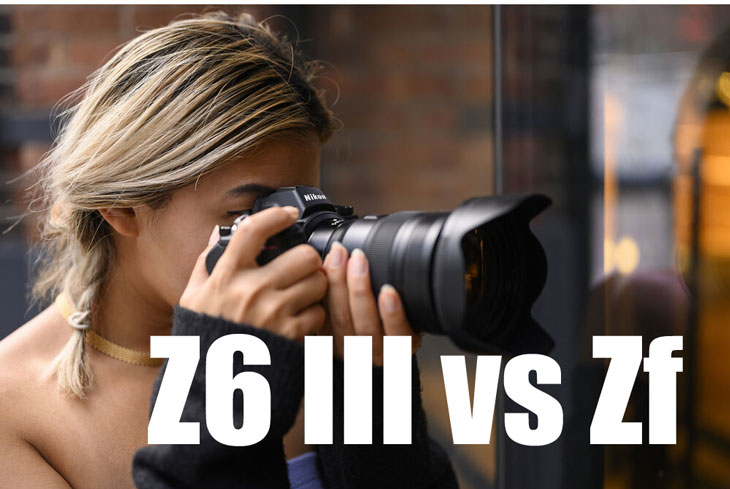
As you can see in the table below, the Z6 Mark III camera features a newly developed 24.5 BSI FX-format full-frame Partially Stacked CMOS sensor with an upscaled design that enhances low-light performance and improved dynamic range compared to the sensor we have in the Nikon Zf/ Z6 II. The readout speed of the sensor also improved and
Dual Expeed 7 image processor: Inside the Nikon Z6 Mark 3 camera, with the help of the new dual Expeed 7 image processor able to extract 6K video resolution up to 60 frames per second in 12-bit N-RAW format. Additionally, you can also shoot continuously up to 120 frames per second in DX crop mode, all due to the fabrication of the dual Expeed 7 image processor inside the Z6 Mark 3 camera body.
Sensor Readout Speed – Nikon Z6 III vs Nikon ZF
Recently announced Nikon Z6 Mark 3 camera with its Partially stacked CMOS sensor is approximately 2.34x faster than the Nikon ZF 24 megapixel FX format sensor. So we are not commenting on the image quality here; of course, we will compare the image quality when the samples of the camera come out. But at the very same time, based on the readout speed of both cameras, the overall calculation that we are getting is that the Z6 Mark 3 camera is at least 2.34x faster than the ZF sensor, resulting in less rolling shutter effect in motion pictures and images.
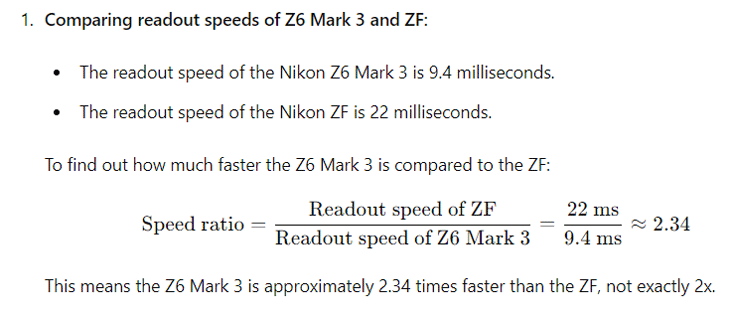
The readout speed of the Nikon Z6 Mark 3 camera while capturing 4K 60p video in 10-bit mode is approximately 9.4 milliseconds, whereas the readout speed of Nikon ZF camera while capturing 4K videos at 4k 30p Video in 10 bit is approximately 22 milliseconds, which is approximately 2.34x more than the Z6 Mark 3 camera. As shown in the calculation above. As we know, Nikon cameras are not able to capture 6kps Raw videos, so the readout speed is not available for that specific set of data.
5.76 million-dot electronic viewfinder: This helps photographers capture perfect decisive moments with a single click. It provides the vision and accuracy needed by professional photographers. No one else in the competition uses such a high-resolution electronic viewfinder in their cameras.
Continuous Shooting Speed
14 FPS mechanical shutter and 20 FPS electronic shutter in full resolution: When shooting in NRAW, the maximum continuous shooting speed is 14 frames per second with the mechanical shutter and up to 20 frames per second with the electronic shutter. The maximum shooting speed can be obtained is 120 frames per second with the electronic shutter in DX mode.
The camera will feature the same artificial intelligence image stabilization algorithms as seen in the Nikon ZF camera, The IBIS center moves along with the AF point of the camera, so you get a true 8 Stops of IBIS from your camera. So, Nikon Z6 Mark 3 camera exhibits a class-leading image stabilization system that no competitor offers at this present time.
The autofocus is said to be much improved compared to the existing Nikon Z8 autofocus tracking algorithms. The autofocus coverage on the sensor is approximately 100%, which is not even possible with the latest Nikon ZF camera, which has a coverage of approximately 90% of the frame. The Z6 Mark 3 camera’s autofocus tracking mechanism has been upscaled to match the performance of competitors like Sony and Canon.
In terms of video resolution, the camera is able to record 6K videos up to 60 frames per second in N-RAW format internally on CFexpress Type B cards. For everything recorded in RAW, it is recommended to use CFexpress Type B cards. 4K recording up to 120 frames per second is available in DX mode.
Price-wise, the camera costs more than the Nikon ZF, so it’s now decision time. If the extended set of features, such as enhanced video core specifications or the maximum burst speed of up to 120 frames per second, matter to you, then you should invest in the Z6 Mark 3 camera. Otherwise, the Nikon ZF is still a good option with extensive manual control.
| Feature |
Nikon Z6 III |
Nikon Zf |
Model Code
|
N2214 |
N2137 |
| Sensor |
24.5 MP BSI, low light, high dynamic range [New Sensor] |
24.5 MP BSI |
| Processor |
EXPEED 7 Dual |
EXPEED 7 |
| Video Capabilities |
6K 6048 x 4032, 12-bit NRAW,
4K 60fps ProRes RAW, Full HD 240fps 8-bit crop |
4K UHD 30p, Full HD 60p |
| Viewfinder |
5.76m dot EVF |
3.68m dot EVF |
| LCD Screen |
Improved vari-angle |
Vari-angle LCD |
| Shooting Performance |
14 fps mechanical, 20 fps electronic (RAW, 14-bit),
120 fps JPEG (DX) |
14 fps continuous shooting |
| Record Time |
37-120 minutes |
N/A |
| Shutter Speed |
1/16000 sec |
1/8000 sec |
| Shutter Type |
Mechanical & electronic |
Mechanical & electronic |
| Autofocus Points |
299 |
299 |
| Focus Algorithm |
Updated, better than Z8/Z9 |
Similar to Nikon Z8 |
| AF Coverage |
Near 100% |
90% |
| Stabilization |
7 or 8-stop VR (same as Nikon Zf) |
7-stop VR |
Pixel-Shift HR Mode
|
Yes |
Yes |
| Memory Cards |
CFexpress + SD |
CFexpress + SD |
| Battery |
EN-EL15 |
EN-EL15c |
| Battery Pack |
Nikon MB-N14 |
Nikon MB-N11 |
| Body Design |
Hybrid between Z6 and Z8 |
Retro-inspired |
| Dimensions |
3-5mm wider, a few mm thicker, 2-3mm taller than Z6II |
Similar to Z6 |
| Weight |
700-750g |
705g |
| USB Port |
USB-C 3.0 (SuperSpeed) |
USB-C |
| HDMI |
HDMI A version 2.1 (full-size) |
HDMI mini |
| Wireless Connectivity |
WiFi 2.4/5 GHz, Bluetooth LE Connect |
WiFi 2.4/5 GHz, Bluetooth |
| Cooling Design |
New cooling design |
Standard |
| Firmware Updates |
Online |
Standard |
| Ergonomics |
Better compared to Z6 |
Retro-styled |
| Price |
Around €3,000 in Europe |
Approximately €2,499 / $2,399 |
| Announcement Date |
June 10-12 |
September 2023 |
| Shipping Start Date |
Mid-July |
October 2023 |
| Kit Options |
Body only, or with 24-70mm f/4, 24-120mm f/4, and another lens |
Body only, or with 24-70mm f/4 |
Follow us on our social pages FACEBOOK | TWITTER | INSTAGRAM to get live news + Nikon Rumors 24X7.
By admin, on April 5th, 2024
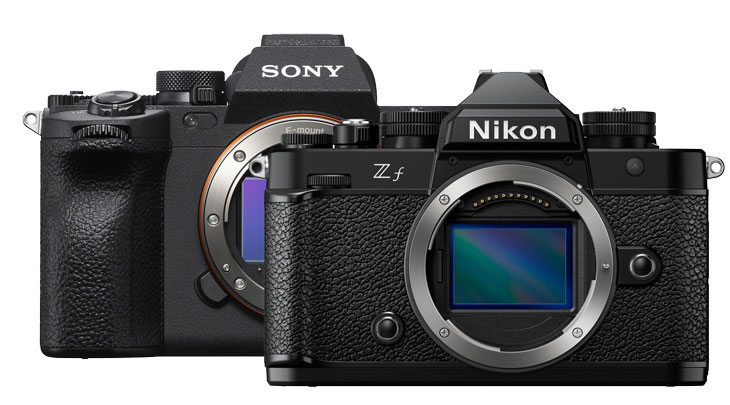
You get a slight resolution advantage with the Sony 33mp resolution sensor. Those who are pixel peepers may notice a slight difference when zoomed into 100% scale in the images of Nikon ZF and Sony A7 4 cameras since the ZF camera is limited to 24-megapixel resolution.
WHY NIKON ZF CAMERA IS THE BEST CHOICE FOR PHOTOGRAPHERS
The Nikon ZF is a camera that features extensive manual control over the body and a tank-like, rock-solid body. It feels quite heavy and the extensive manual controls allow you to alter any settings with the help of the dials and controls you have all over the camera body while shooting in manual mode.
| Feature |
Sony A7 4 |
Nikon ZF |
| Resolution |
33mp |
24mp |
| Body |
Standard |
Tank-like, rock-solid |
| ISO Range |
Up to 51,200 |
Up to 64,000 |
| Image Stabilization |
Sensor-shift, weaker in photography mode, stronger in videography |
Advanced 5 stops of sensor-shift with AI algorithm |
| Continuous Shooting |
Up to 10 frames per second |
Up to 15 frames per second |
| High-Resolution Mode |
33 megapixels |
Up to 96 megapixels |
| Low Light Sensitivity |
-4 EV |
-10 EV |
| Lens Mount |
E-Mount | Open Mount |
Nikon Z mount | Open Mount |
| Video Recording |
4K at 60 fps with APS-C crop |
4K at 60 fps with APS-C crop |
| Bit Rates |
600 megabits per second |
340 Mbps for H.265 10-bit video, and 300 Mbps for H.265 8-bit video |
| Image Stabilization in Video |
Desirable, gyro-based |
Standard |
Apart from this, the sensor inside the Nikon ZF camera is ultra-low light-sensitive. The 24-megapixel full-frame sensor features a standard ISO range up to 64,000 whereas the Sony A7 4 camera’s standard ISO range is limited to 51,200. So without a doubt, we will get an extra one-stop advantage in low-light performance from the Nikon ZF camera.
Must see – Best Lenses for Nikon Zf | Sony A7 IV Best lenses
One of the biggest factors that affect the low light performance of the camera is the type of sensor-shift image stabilization system used inside the body. The Nikon ZF camera uses advanced 8 stops of sensor-shift image stabilization technology as well as an artificially intelligent algorithm that moves the autofocus points along with the sensor-shift IBIS technology. So the image stabilization is not always focused at the center of the frame; the center always changes along with the autofocus point in the photography mode. The Sony A7 IV camera IBIS is limited to 5 Stops and traditional IS technology.
Another advantage that we have is the continuous shooting mode of the camera. With the Nikon ZF, you can shoot up to 15 frames per second whereas with the Sony A7 4, you remain limited to 10 frames a second.
|
Sony A74 |
Nikon Zf |
| Autofocus System |
Hybrid PDAF |
Hybrid PDAF with deep learning subject recognition |
| Autofocus Points |
759 |
273 |
| Maximum Low-Light AF Sensitivity (Standardized to f/2, ISO 100) |
-4 EV |
-8.5 EV |
| Standard Flash Sync Speed |
1/250 |
1/200 |
Another big advantage that we have found in the Nikon ZF camera is the low light sensitivity. The ZF camera can shoot up to -10 EV which is in extremely low light conditions whereas the Sony A7 4 camera’s low light capability remains limited to -4 EV.
| High-Resolution Mode |
33 megapixels ONLY – NO HR MODE |
Up to 96 megapixels (requires tripod or studio setup for best results) |
The Sony A7 4 camera’s 33-megapixel advantage is being overshadowed by the Nikon ZF’s multi-shift high-resolution mode which is capable of shooting up to 96 megapixels of resolution. But yes, it is not possible to shoot handheld; you will need a tripod or best to practice the high-resolution mode in a studio setup.
Sony A7 4 versus Nikon ZF, which camera should you buy? VERDICT
So if we combine all the capabilities like the hybrid sensor-shift stabilization system, the high-resolution mode, the better standard ISO range, the capability to shoot higher frame rates, and also advanced or better low light sensitivity, overall the Nikon ZF camera is more recommended to photographers compared to the Sony A7 4.
The lens mount Nikon Z mount is now open and has a variety of options available from third-party lens makers like Sigma and Tamron. So if you are invested in Z mount, you won’t feel that much scarcity of being limited to a specific mount without having any option for third-party lens makers.
Let’s talk about the video comparison of both cameras.
Both cameras are able to shoot videos up to 4K at 60 frames per second, and both of them do have APS-C crop while filming 4K 60p and no crop while recording 4K up to 30 fps.
BIT RATES COMPARED
Let’s compare the bit rates of both the cameras and if you compare the bit rates then it is very clearly evident that Nikon ZF camera lower bit rates (MAX Nikon Zf has a maximum bit rate of approximately 340 Mbps for H.265 10-bit video, and 300 Mbps for H.265 8-bit video. The bit rate depends on the video file type), Sony A7 IV MAX bitrates goes upto 600MPBS. Having slightly higher res sensor can be one of the resons of having such difference since both of them do oversampled 4K videos.
Both cameras record 4:2:2 10-bit internally and in both of them, we have log profiles available for having maximum dynamic range possible.
GYRO-BASED IMAGE STABILIZATION
Now the biggest advantage we have with Sony is its GYRO BASED image stabilization system. Its sensor-shift image stabilization is weak compared to the Nikon ZF camera in photography mode but when we talk about videography, and cinematography then gyro-based image stabilization is way more effective than having a sensor-shift image stabilization system.
LENS BREATHING CORRECTION
Now the most impressive thing that I have seen in the Sony A7 4 camera is lens breathing correction in video. The camera exhibits excellent lens breathing correction while using third-party lenses.
Now we also have an anti-dust shake mechanism inside the Sony A7 4 camera and Nikon should also learn it. The way they have copied this style from Canon, Nikon should also copy this particular style of rotating the sensor either from Sony or Canon because they have to do it otherwise our sensors are not always protected when the lens is unprotected.
Now a full-size HDMI port is available in the Sony A7 4 camera and that’s an amazing thing. Believe me, I really hate having a micro or mini HDMI port in a camera.
OVERHEATING
I have personally used both the camera, Nikon ZF camera handles overheating very well and while using a Sony A7 IV camera you have to use the CF express type A Card or at least V90 to avoid potential early overheating.
BEST CAMERA FOR VIDEO
Sony A7 IV camera is more recommended for video, since if we look at the overall features we get a lot of stuff required for video workflow, but again if you living near the equator, better to invest in Nikon Zf.
Get a Sony A7 IV Camera from Amazon.com | B&H Store
Get a Nikon Zf camera from Amazon.com | B&H Store
By admin, on December 26th, 2023
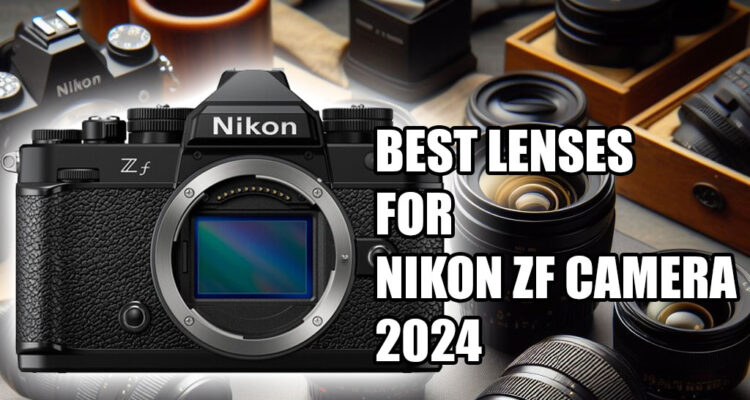
It can be very challenging to choose the perfect lens for your Nikon Zf camera. There are several lenses available as options. At the same time, Nikon has also opened their lens mount for third-party lens makers. Now, we also have lenses from Tamron and Sigma, as well as Viltrox. So, you have to select your lenses based on your requirements and the budget range you have.
Whether you are involved in wedding photography or cinematography, or you want to shoot fashion portraits or editorials, or you are a sports photographer wanting a perfect lens for wildlife photography, we have selected some of the best lenses for the Nikon Z F camera
What are the Best lenses for Nikon Zf in 2024?
Best lenses for Nikon Zf Camera start now, I have selected some of the best lenses for the Nikon Z8 camera for wedding photography, cinematography, Best lenses for wildlife and sports as well as Nikon Zf best lenses for shooting content.
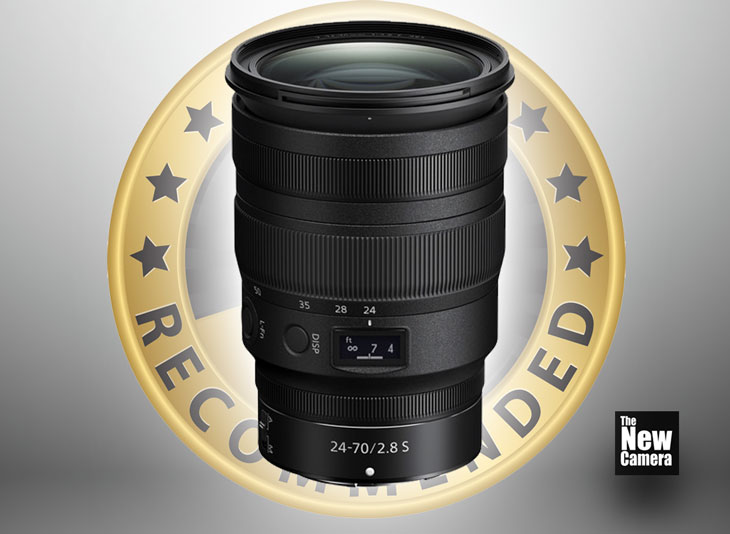
Get Nikon Z 24-70mm F2.8 Lens from Amaznon.com | B&H Store
1. Nikon 24-70 mm F2.8
Nikon 24-70 mm F2.8 – The best allrounder lens for the Nikon ZF camera is the Nikon 24-70mm f/2.8 S. The first recommendation is the Nikon 24-70mm f/2.8 S. This lens features a constant f/2.8 aperture throughout the zoom range and delivers amazingly sharp output throughout the focal range with creamy bokeh, one of the most sharp and versatile lenses present to date, this lens will cover your 99% requirements.
If you are a wedding photographer and cinematographer, or a travel shooter, street and fashion portrait photographer, this versatile lens is highly recommended, once you have this lens on your camera you won’t need any other lens. The biggest reason for recommending this lens is that you can shoot almost anything with it, from wide-angle landscapes to longer focal-length portraits. This is one of the most versatile and sharpest lenses Nikon has ever made for full-frame cameras.
Nikon 24-70mm F2.8 user Review
Build Quality (5/5): The moment you pick up the NIKKOR Z 24-70mm f/2.8 S, you can feel the build quality and attention to detail. It’s robust, weather-sealed, and exudes a sense of durability. The lens mount is solid, and it pairs perfectly with Z series cameras.
Image Quality (5/5): This lens produces incredibly sharp and detailed images throughout the zoom range. The f/2.8 aperture is perfect for low-light situations, and the nine-blade aperture diaphragm creates beautiful, creamy bokeh. It’s versatile, whether you’re shooting landscapes, portraits, or events.
Autofocus (4.5/5): The autofocus system is lightning fast and remarkably accurate. It’s perfect for capturing fast-moving subjects or achieving precise focus in challenging conditions. The stepper motor ensures quiet and smooth focus transitions, making it an ideal choice for videographers as well.
Versatility (5/5): The 24-70mm focal length range is incredibly versatile and covers most photography situations. It’s a lens you can trust whether you’re shooting wide-angle landscapes, tight portraits, or anything in between. The lens is also relatively compact and lightweight, which makes it perfect for all-day shooting.
Handling (5/5): The ergonomic design of this lens is a joy to work with. The customizable control ring is a great addition, allowing you to adjust settings like aperture, ISO, or exposure compensation quickly. The zoom and focus rings are smooth, and the overall balance feels perfect in your hand.
Price (4/5): While this lens is an investment, its quality and performance justify the cost. It’s worth noting that you get what you pay for, and the NIKKOR Z 24-70mm f/2.8 S is a premium piece of glass that will serve you well for years to come.
Chromatic aberration is also very well-controlled. We didn’t find it to be an issue, and frankly such purple and green fringing in front of, and behind, the focus plane wasn’t an issue. The autofocus performance is also top-notch. The lens uses 2 AF drive units synchronized to deliver speedy and accurate AF results – even when you are using your camera at 120 frames per second or when you are using it at 20 frames per second. This lens is bound to give perfect results when paired with Z9 or Zf.
Conclusion – Highly Recommended if budget allows
| What we like |
What we don’t |
- Very lightweight and quite compact for its class
- Comprehensive weather-sealing
- Very sharp and free of most offensive optical defects
- Decent macro performance
- Handy multi-function OLED display
- Works well for video too
|
|
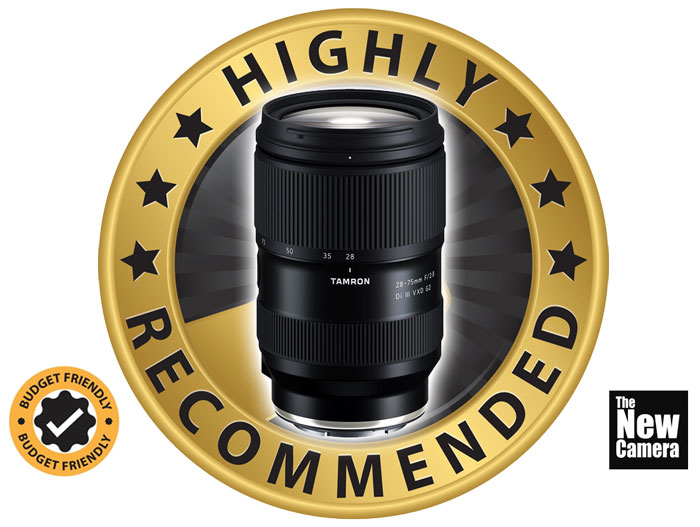
get the Nikon 28-75mm F2.8 lens from Amazon.com | B&H Store
2. Tamron 28-75mm F2.8 (Budget Alternative)
The Tamron 28-75mm F2.8 lens is one of the best budget alternatives to the more expensive 24-70mm F2.8 lens. Users of the Tamron 28-75mm F2.8 appreciate its balanced features, including a constant F2.8 aperture throughout the zoom range. The optical performance of this lens is also excellent. It is designed for Nikon cameras to extract the maximum possible quality from a given scene
What users say
This is a great lens. Great for photos. Im use mine with my new Z8. What a great pair. Super light and f2/8. Will be using it in the fall for basketball.
The lens features a hybrid stepping drive autofocus motor, making it perfectly suitable for both still and video photography. The best part of this lens is its internal focus design, which allows you to capture your subjects even in adverse weather conditions, thanks to its advanced weather sealing.
If you are a wedding photographer or cinematographer and are unable to afford the Nikon 24-70mm F2.8 lens due to budget constraints, then the next lens you should consider is the Tamron 28-75mm F2.8. This lens is an excellent value for your money and is highly recommended for wedding, travel, fashion, and portrait photography.
Conclusion: Highly recommended
| What we like |
What we don’t |
- Best Pro Budget Lens for Nikon
- Comprehensive weather-sealing
- Very Sharp at the center
- Excellent macro performance
- Works well for video too
|
- Less coverage at the wider end compared to 24-70mm F2.8
|
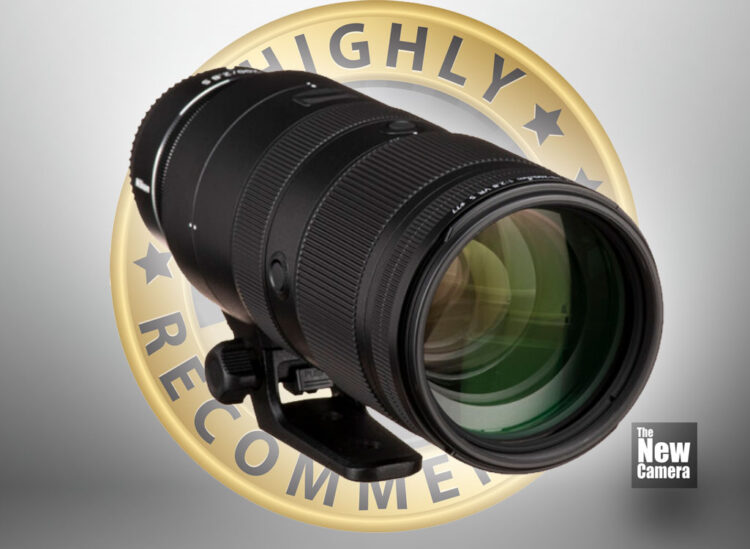
Get this Lens 70-200mm F2.8 lens from Amazon.com | B&H Store
3. Nikon 70-200mm F2.8
The Nikon 70-200mm f2.8s lens produces incredibly sharp pictures and extracts the maximum amount of detail in your images. It is one of the best lenses to pair up with your Nikon Zf camera. Practically no color fringing or chromatic aberration is visible in this lens. The lens is distortion-free and lens vignetting is also very minimal and can be easily corrected in post-processing.
Should you buy this lens?
If you are a wedding photographer who wants to capture life-size portraits of your clients in a cinematic style, or if you want to capture distant candid images in a unique fashion, then this lens could be a good choice for you. Additionally, if you are into sports and wildlife photography, this lens is a must-have in your arsenal. However, the final decision should be based on your specific needs and budget. It’s always a good idea to research and compare different lenses before making a purchase.
The build quality of this lens is superb and made up of a metal body covered with rubberized material. It is extensively weather-sealed and able to deliver quality equal to its price tag. The LCD screen of the lens is not that much usable since we don’t have the habit of looking at the lens LCD. Maybe that’s one of the reasons I find the display not that much usable for me. Overall, the lens is worth every penny.
Finally, let’s talk about autofocusing performance. When paired up with a Nikon Z8 or Nikon Z9 camera which uses deep learning algorithms, the lens’s autofocusing system will improve with time. At the same time, the Z8 is capable of doing 120 AF calculations per second and supports burst speed up to 120 frames, and your lens is fully capable of synchronizing the AF performance even when shooting at max burst speed.
What our users say
As expected, this is a superb performing, ultra-sharp lens. It is built to professional standards, with a solid feel internal zoom, and smooth rotating tripod collar. The only reason I will cut a few marks is somewhat hefty weight. It is almost as heavy (within a few ounces) as the F-mount SLR equivalent, which would be another reason to consider the lighter 70-180. Sony and Canon both made their mirrorless 70-200 f2.8 lenses significantly lighter than the SLR equivalents, so why can’t Nikon do the same?
The image stabilization of this lens is highly reliable and you can shoot amazing pics handheld without any noticeable blur even at very slow shutter speeds when shooting at 200mm.
Although the price of this lens is approximately $2600, the worst thing about this lens since it costs even more than the Nikon Zf camera.
Conclusion
| What we like |
What we don’t |
- Excellent optics
- Hybrid AF Motor
- Almost free from all lens distortion
- Weather sealed
- Works well for video too
|
- Heavy, always need tripod/monopod for shoot
- Price
|
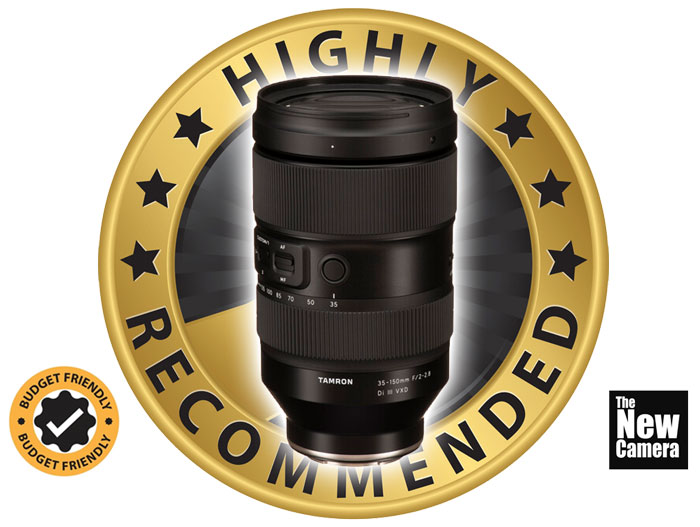
Get Tamron 70-180mm F2.8 lens from Amazon.com | B&H Store
4. Tamron 70-180mm F2.8 VXD (Budget Alternative)
Let’s discuss the best budget alternative to the 70-200mm F2.8 VR lens. The Tamron 70-180mm F2.8 VXD lens is a great option. If your budget allows, then without a doubt, you should buy the Nikon 70-200mm F2.8 lens. However, if your budget doesn’t permit and you wish to have output similar to the 70-200mm lens, then you should consider buying the Tamron 70-180mm F2.8 lens. It’s always important to choose a lens that fits your specific needs and budget.
What professionals say about this lens
Added this for events rather than 70-200 when shooting all day. Excellent results. I wanted to trim my kit in weight so this was a no-brainer. The tiny differences in IQ are not noticeable unless you’re a pixel peeper at 200%. The fact that it doesn’t float my image after each shot is a HUGE bonus.
Conclusion
| What we like |
What we don’t |
- Excellent optics
- Hybrid STM AF Motor
- Lightweight design for event shoot
- Weather sealed
- Works well for video too
|
|
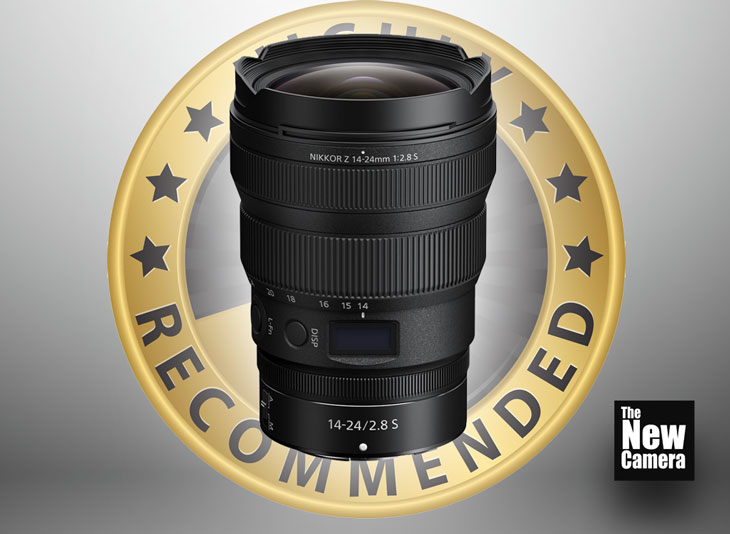
Get Nikon 14-24mm F2.8 Lens from Amazon.com | B&H Store
5. Nikon 14-24mm F2.8 – Best Ultra Wide Zoom
The 14 to 24 mm f/2.8 lens is the best lens for landscape and architecture photography, as well as for advanced cinematographers and content creators.
Usage of the Lens ?: If you are a pro content creator and mostly you create daily lifestyle vlogs then for sure this one is a must-have lens for you, the other most applicable regions for this lens are indoor/outdoor architecture photography and corporate videos. This lens is also very usable for landscape shooters.
The 14 to 24 mm lens in Nikon is a part of a holy trinity lens which includes the 24 to 70 mm f/2.8 and the 70 to 200 mm f/2.8. This lens is the sharpest wide-angle zoom lens at this focal length in Nikon’s lineup, The image quality of this lens is super impressive even at 14 mm wide, and covers approximately 115 degrees of view.
So if your budget allows and you want to have an ultra-wide zoom lens, then you should go with this. The only issue that I have faced with this lens is finding its proper filters since it has a very large thread of 112 mm.
Conclusion
| What we like |
What we don’t |
- Excellent optics
- Best Ultra-wide Zoom Lens
- Lightweight design
- Weather sealed
- Works well for video too
|
|

Get Tamron 17-28mm F2.8 lens from Amazon.com | B&H Store
6. Tamron 17-28mm F2.8 (Budget alternative)
Now, if you have a limited budget, then do not buy the 14-30mm F4 lens. The best alternative to that is the Tamron 70-28mm F2.8 lens. For Daily Life Vloggers/content creators, it’s highly recommended that they should buy this lens. Even for those who shoot indoors, like indoor architecture photography or corporate-style videos where sometimes u need a wide-angle zoom lens the best option will be the Tamron 17–28mm F2.8 RXD. Now, for those who shoot nature and landscape images or those who shoot outdoors architecture where light isn’t a big issue, AND if you are not able to buy the Nikon 14-24mm F2.8, then you can go with the 14-30mm F4 in that specific case.
Conclusion
| What we like |
What we don’t |
- Good Optics
- Good chromatic aberration control
- Silent AF
- Lightweight design
- Works well for video too
- Excellent price-to-performance ratio
|
- Abbreviated zoom range compared to competitors
- Pronounced barrel distortion at 17mm
|
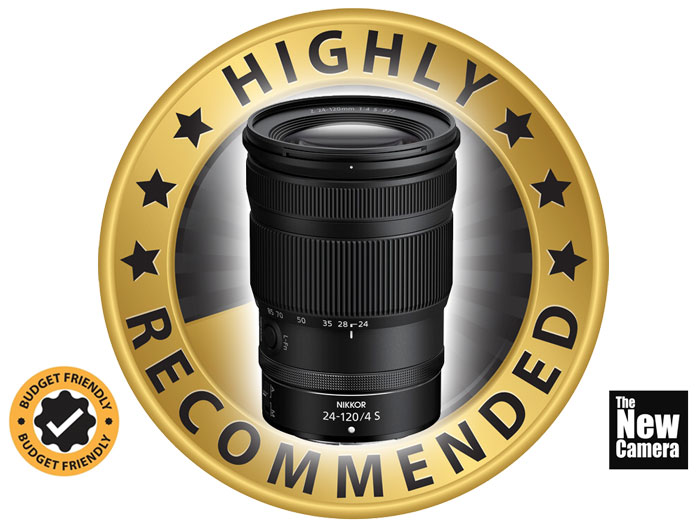
Get a Nikon 24-120mm Lens from Amazon.com | B&H Store
7. Nikon 24-120mm F4S Best Travel Zoom Lens
The Nikon 24-120mm F4 lens is a multipurpose zoom lens with a constant F4 aperture throughout the zoom range. It is highly recommended for daytime travelers or for those who want an all-rounder lens and mostly work in light, not in dark situations or at night time. This particular lens is highly usable as it covers a very broad range from 24-120mm and features an F4 aperture with a VR unit inside.
For those concerned about low light performance, or those who know they will be working mostly in uncontrolled light environments or they didn’t carry any professional lights with them all the time, in those very specific scenarios, it’s recommended to buy a bright aperture-based zoom lens if possible. For that, I would highly recommend the Tamron 28-75mm F2.8 lens. Otherwise, you may feel sometimes that the F4 aperture is blocking a lot of light, whereas an F2.8 lens will help you to capture a clear picture
Conclusion
| What we like |
What we don’t |
- Cover long range
- Constant F4 Aperture
- Hybrid STM AF Motor
- Lightweight design
|
|
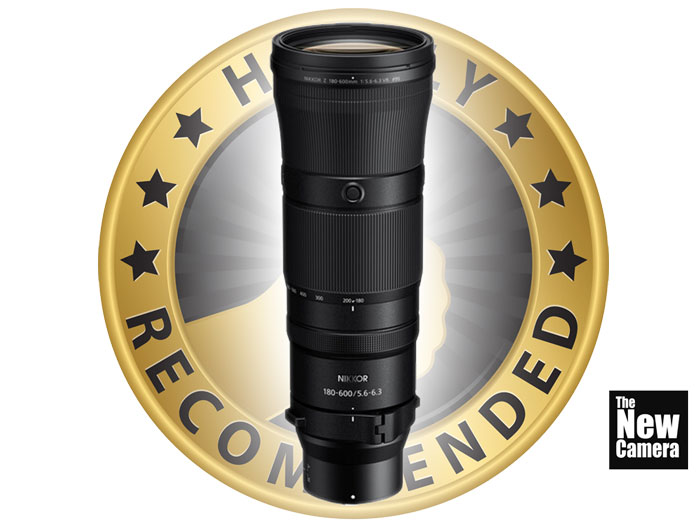
Get a Nikon 180-600mm Lens from Amazon.com | B&H Store
8. Best Wildlife and Sports – Nikon 180-600mm F5.6-6.3 VR
If you are interested in sports and wildlife photography and have a good budget, then I have a lens recommendation for you. The lens is the 180-600mm lens which covers a remarkable range. The lens construction is rock solid and weather-sealed, and it has different types of VR as well as programmable modes for its easy function during the shoot. The quality of optics used by Sigma Japan just amazing, capturing sharp images throughout the zoom range. When capturing at 600mm or 180mm, you will be surprised by the amount of detail present in the image, even when paired with a Z9 camera’s 45.7-megapixel sensor. The lens’s resolving capability is exceptional. This lens could be a great addition to your photography gear.
What users say about Nikon 180-600mm F5.6-6.3 VR
I finally got this lens that is replacing my Nikon 200-500 and, I have to say, it is superior in every way. It’s sharper, has interior movement, goes from 180 to 600 in a flick of the wrist, it’s water resistant and has a 4-button programmable ring. I use it on my Z9 camera-great combination. I could not be more pleased with it. It has noticeably upped my wildlife shooting game.
The Nikon Z 180-600mm f5.6-6.3 VR lens’s sharpness is phenomenal and delivers tack-sharp images across the full frame at all focal lengths. As I have said if budget allows this is the best lens you can buy for your Nikon Zf camera. The lens pairs beautifully with the Z TC-1.4x without any issues and boasts a speedy and dependable autofocus. The Lens handles color aberrations, coma, focus-breathing, and distortions with aplomb. Plus, it’s got effective optical image stabilization and produces a creamy bokeh. Weighing in at a relatively high 2kg and packed with features, this lens offers great value for its price. If you’re looking for a lens that delivers on performance, the Nikon Z 180-600mm f5.6-6.3 VR lens comes highly recommended!
Conclusion – 180-600mm Lens Highly Recommended for sports and wildlife shooters
| What we like |
What we don’t |
- Best Lens for Wildlife | Sports
- Cover up to 600mm
- Hybrid USM AF Motor
- Hybrid IS
- Dust Proof design
|
- Heavy approx 2kg, will need monopod support for smooth capture
|
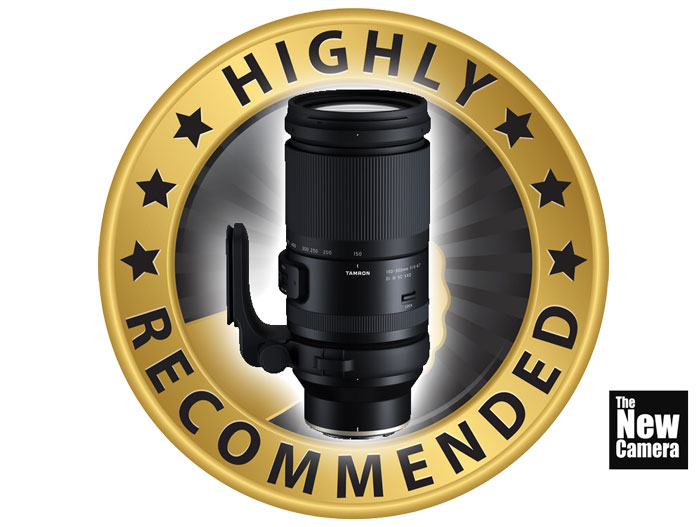
Get the Tamron 150-500mm Lens from Amazon.com | B&H Store
9. Tamron 150-500 F5-6.7 – Budget Alternative
See the budget alternative is only when you don’t have the budget to buy the 182600 MM lens. Otherwise, the 180 to 600 MM lens produces very sad images at the tele compared to 150 to 500 mm and the darkest part is Damron 150 to 500 mm has a slower aperture at 500 mm compared to the Nikon 182 800 MM lens whose maximum aperture goes up to 6
We recommend you to go with Nikon 180-600 mm and only if the budget does not allow then you go with the 150 to 500
Conclusion
- If you prioritize features and image quality and are willing to pay more for a longer reach and better low-light performance, the Nikon Z 180-600mm is the better choice.
- If you are on a budget and prefer a more compact and portable lens, the Tamron 150-500mm is a great option that still offers excellent image quality.
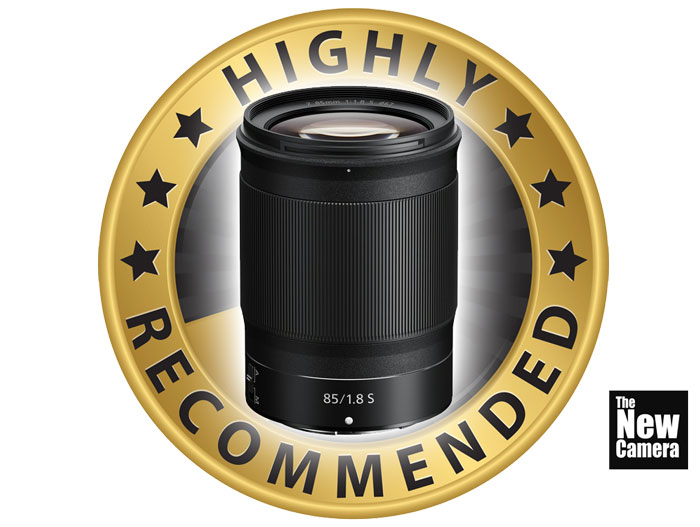
Get the Nikon Z 85mm F1.8 S Lens from Amazon.com | B&H Store
10. Nikon Z 85mm F1.8S
If you’re a professional portrait, fashion, or wedding photographer looking for the perfect portrait prime lens, then without a doubt, the 85mm F1.8 S is the best lens you can have for your Nikon Z camera.
This lens is a portrait lover’s dream. It’s highly recommended for portrait photography. Its wide f/1.8 aperture throws the background into dreamy softness, making your subject the star. Whether it’s a romantic candlelit dinner or a child’s infectious laughter, or ur capturing pre-wedding candids, capture those expressions with stunning detail and depth.
Low-Light Luminary: Don’t let darkness dim your creativity. The f/1.8 aperture gobbles up light, letting you shoot stunning photos in dimly lit cafes, concert halls, or even under the starry sky. Capture the mood, the emotion, and the beauty of those fleeting moments, even when the sun sets.
If your budget allows, you must have this lens for your Nikon Z camera. It’s the best portrait prime lens ever built by Nikon for its Z system mirrorless camera.
What users say about this lens
As I transitioned from DSLR (D850) to Z7 this lens replaced my 85 1.4G. Pleasantly surprised. Light, fast focus, and extremely sharp. Even if or when Nikon produces a 1.4 version, I wouldn’t upgrade.
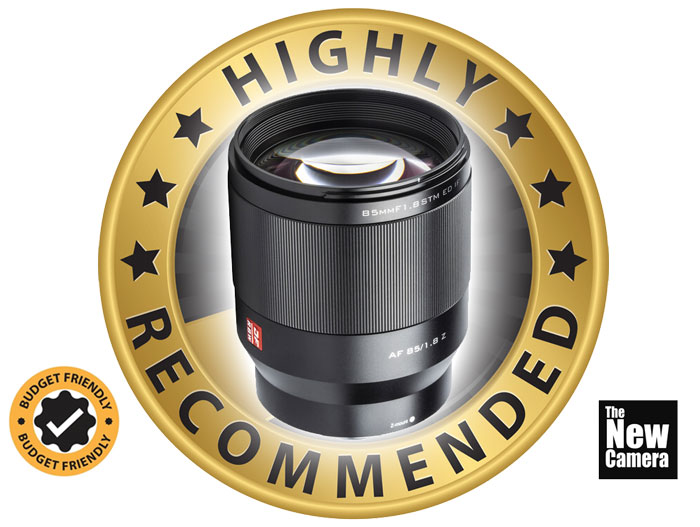
Get Viltrox 85mm F1.8 from Amazon.com | B&H Store
11. Viltrox 85mm F1.8: Budget alternative:
The construction is very solid, the focus ring is very comfortable and has a smooth action. The autofocus is very fast and silent. And the optical performance is excellent. Razor sharp at the center, even at maximum aperture. AF works perfectly. Eye AF works great no complaints. The focus ring is vary smooth. It came with the latest firmware installed. For the price, you can’t ask for anything more.
Nikon 85mm F1.8 OR Should you buy the more affordable Viltrox 85mm F1.8 Lens instead of Nikon 85mm F1.8, let’s find out
Conclusion
What we like Nikon 85mm F1.8
|
What we don’t |
- Superior build quality: Weather-sealed construction makes it ideal for harsh conditions.
- Superb bokeh: Creamy and smooth background blur for exceptional portraiture.
- More consistent autofocus: Highly reliable even in low-light situations.
|
- Higher price: Significantly more expensive than the Viltrox.
- Bulky and heavier: Not as comfortable for long outings or travel.
- Autofocus speed: Slightly slower than the Viltrox in some situations.
|
Budget alternative: Viltrox 85mm F1.8
Should you buy the more affordable Viltrox 85mm F1.8 Lens instead of the Nikon 85mm F1.8, let’s find out
| What we like |
What we don’t |
- Significantly cheaper: This is a major advantage for budget-conscious photographers.
- Compact and lightweight: Easier to carry around and travel with.
- Fast autofocus: Great for capturing fleeting moments and fast-moving subjects.
- Good image quality: Sharpness and color rendition are generally excellent, especially for the price.
|
- Build quality: Not as weather-sealed or robust as the Nikon.
- Bokeh: May not be as smooth or creamy as the Nikon at wider apertures.
- slow AF in low-light compared to Nikon
|
Which one is better?
Picture this: you’re staring down two magical wands, each promising to conjure up dreamy portraits and captivating close-ups. One wand sings a budget-friendly tune, while the other whispers promises of pro-grade performance. So, which one unleashes your inner photography wizard?
The Viltrox: This wand is for budget-conscious photographers and cinematographers. It’s lighter, easier to sling on your back, and won’t break the bank. Its autofocus is quick as a wink, capturing fleeting moments like a charm. Sure, it might get a little cranky sometimes in dim light, and its build isn’t quite as tough as a dragon’s scales, but the photos it conjures are sharp and stunning. Think of it as your sidekick for budget-friendly street stories and travel escapades.
The Nikon: This Lens is made for the perfectionist who craves control. It’s built like a fortress, ready to weather any storm and keep your focus razor-sharp even in the deepest shadows. Its bokeh (that’s the fancy word for blurry backgrounds) is like a creamy dream, making your subject the star of the show. But be warned, this wand demands a hefty investment. Think of it as your ultimate ally for crafting flawless portraits and capturing fleeting moments with professional precision.
7 Best Lenses for Nikon Z8 (…and 3 to avoid)
Nikon ZF vs Nikon Z6 Mark II – 12 Major Differences
By admin, on October 29th, 2023
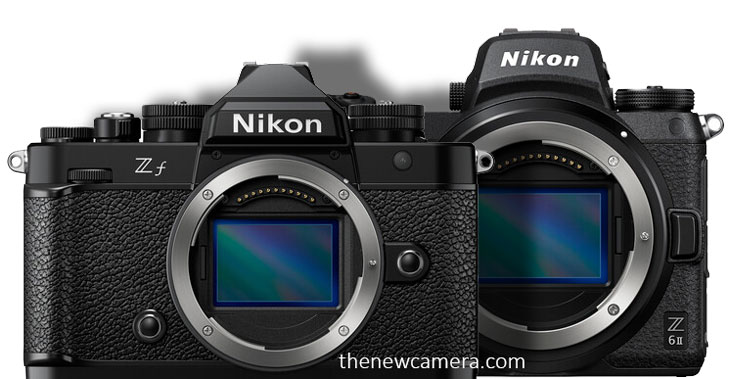
Let’s compare the two full-frame cameras that fall almost in the same price range: the Nikon ZF and the Nikon Z6 Mark II. We will try to find out the best camera for you according to the core differences between them and the body design type.
Apart from the basic specs differences, in the design part, the Nikon ZF camera is a kind of retro-style camera with extensive manual controls. The look of the camera is really brilliant and very attractive for a professional photographer. Without a doubt, if you have to compare the look of both cameras, ZF is a clear winner.
| Feature |
Nikon ZF Camera |
Nikon Z6 Mark II Camera |
| Display Screen |
Vari-angle-adjustable |
Tilting |
| Top LCD Display Screen |
Mini Display |
Large |
| Full Size HDMI |
Yes |
No |
| Black and White Mode |
Dedicated black and white mode with two different options: Flat mono and Deep tone mono |
Normal black and white mode |
| Memory Card Slots |
Dual card memory slots with one slot for UHS-II and the other for MicroSD UHS-I |
Dual card memory slots with one slot for CF Express Type B cards and the other for UHS-II cards |
1. VLOGGERS FRIENDLY
The Nikon ZF camera features a vari-angle-adjustable display screen on the rear side of the camera. This screen not only helps photographers to have compositional freedom, but it is also very helpful for content creators who create online content for YouTube, Instagram, or TikTok.
In contrast, the Nikon Z6 Mark II camera has a tilting display screen on the rear side of the camera, which is not as helpful for content creators. It also limits the compositional freedom of a photographer. feature that is absent in the Nikon ZF camera is the top LCD display screen that you find in the Nikon Z6 Mark II. The Nikon ZF has a smaller display screen that shows the aperture value of the lens when the camera is on. This could be a consideration depending on your specific needs and preferences in a camera.
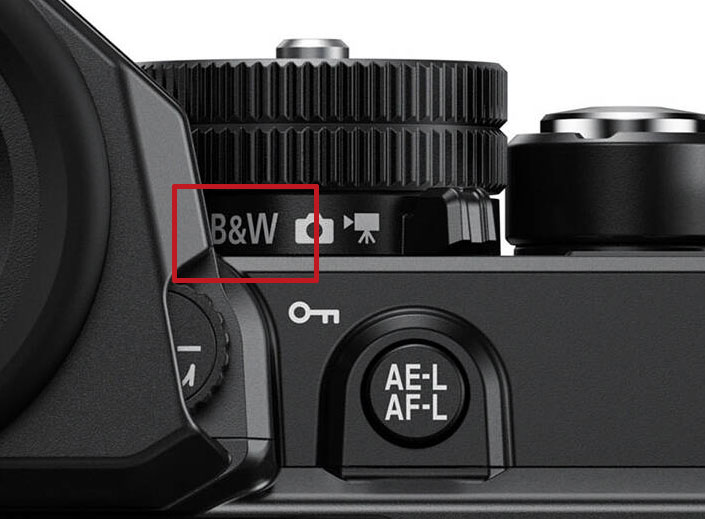
2. BLACK AND WHITE
Dedicated black and white mode present in the Nikon ZF camera. Now, what is so important about this black and white mode or the monochrome of the Nikon ZF camera? The Nikon ZF camera monochrome profile features two different options: one is Flat mono and the other is Deep tone mono. The Deep tone mono accentuates red details in the scene. Both of them can be used in stills as well as in video footages. So, it is not just a normal black and white mode that we see in a normal Nikon camera. It does have profiles and in the future, we may have more profiles added to the mono through updates.”
3. MEMORY CARD SLOTS
The Nikon ZF camera and the Nikon Z6 Mark II camera both have dual card memory slots. However, in the Nikon ZF camera, due to the compact design, engineers have included a Micro SD card slot. So, one card slot is for UHS-II, and the other card slot is for MicroSD UHS-I. This is highly suitable for photographers for keeping a backup file.
In the Nikon Z6 Mark II camera, we have two different card slots. One accepts CF Express Type B cards and the other is designed for UHS-II cards. Now it depends on you whether you want to invest in CF Express Type B cards or you want to invest in UHS-I and Micro SD cards. The latter could be a more affordable option for you if you are a photographer.
| Feature |
Nikon ZF |
Nikon Z6 Mark II |
| Sensor |
24-megapixel FX format full-frame CMOS sensor |
24-megapixel FX format full-frame CMOS sensor |
| Image Processor |
Uses the advanced Expeed 7 image processor, same as in the Nikon Z9 flagship camera |
Uses an older image processor |
| High-Efficiency RAW |
First NIKON camera in this price range to feature high-efficiency RAW compression, allowing shooting in 10-bit HEIF format, an alternative to standard 8-bit JPEG images |
Does not have this feature |
| High-Resolution Mode |
Features a multi-shot pixel shift high-resolution mode, able to capture images up to 96 megapixels with the help of its advanced image stabilization system |
Does not have this feature |
| Image Stabilization |
Very advanced, uses an AI algorithm to optimize the performance of the sensor-shift image stabilization unit. The IS system moves along with the autofocus point of the camera, offering off-center image stabilization support |
Does not offer off-center image stabilization support |
4. SENSOR OF BOTH THE CAMERA
Both the Nikon ZF and the Nikon Z6 Mark II cameras feature the same 24-megapixel FX format full-frame CMOS sensor. However, the biggest difference is created by the image processor used in both cameras. The Nikon ZF features a very advanced image processor, the Expeed 7, which is the same image processor being used in the Nikon Z9 flagship camera.
5. High-Efficiency RAW
After the Nikon Z9 and Nikon Z8, the Nikon ZF camera is the first camera to feature high-efficiency RAW compression, which is possible with the introduction of the new Expeed 7 image processor inside the camera. The high-efficiency RAW format allows a photographer to shoot 10-bit in HEIF format, which is a perfect alternative to the standard 8-bit JPEG images.
6. A 96 MP HIGH-RESOLUTION MODE
The Nikon ZF camera features a multi-shot pixel shift high-resolution mode. With the help of its advanced image stabilization system, the camera is able to capture higher resolution images up to 96 megapixels, which is certainly not possible with the Nikon Z6 Mark II camera
7. iMAGE STABILIZATION ATTACHED WITH AF POINT
The image stabilization of the latest Nikon ZF camera is very advanced and uses an artificial intelligence algorithm to optimize the overall performance of the sensor-shift image stabilization unit. The camera’s IS system moves along with the autofocus point of the camera, so the center of stability moves along with the subject in focus. Currently, no other camera offers off-center image stabilization support like the Nikon ZF does.
| Feature |
Nikon ZF |
Nikon Z6 Mark II |
| Autofocus System |
Uses the latest Expeed 7 image processor and advanced AI autofocus algorithms. Able to track a wide variety of animals and vehicles. The autofocus system covers approximately 96% of the horizontal axis of the image area3. The AF sensitivity extends down to -10EV. |
Uses an older image processor. Recognition is limited to humans and animals. The autofocus system covers approximately 90% of the sensor area. |
| AF Sensitivity |
Able to autofocus up to -10 EV, allowing it to shoot in nearly dark environments. |
Autofocus sensitivity is limited to -4.5 EV4. |
| Continuous Shooting Speed |
Maximum shooting speed is 30 fps in C30 mode. Able to capture RAW files of any type up to 14 fps. |
Maximum shooting speed is 14 fps for 12-bit RAW images and 10 fps for 14-bit RAW images. |
8. Autofocus
Both cameras feature the same sensor with the same number of hybrid autofocusing points, but the big difference is the type of image processor used in each camera. The Nikon ZF camera uses the latest Expeed 7 image processor. Not only is the image processor new, but the camera also uses advanced artificial intelligence autofocus algorithms that are being used in the Nikon Z9 and Nikon Z8 cameras. The same artificial intelligence AF algorithm is being implemented in the Nikon ZF camera, so the 3D object tracking has improved a lot compared to the Nikon Z8. Now, the camera is able to track a wide variety of animals including birds as well as vehicles like cars, motorbikes, and planes. The Nikon Z6 Mark II camera’s recognition is limited to humans and animals only
9. AF SENSITIVITY LIKE NO OTHER
The autofocus sensitivity of the Nikon ZF camera is the best among all Nikon mirrorless cameras right now. The Nikon ZF is able to autofocus up to -10 EV, whereas the Nikon Z6 Mark II’s autofocus sensitivity is limited to -4.5 EV. This clearly indicates that the Nikon ZF camera is able to shoot in nearly dark environments, which is not possible with the Z6 Mark II. The sensitivity of the Nikon ZF is not only the best in its class, but it is also similar to today’s flagship cameras.
10. CONTINUOUS SHOOTING SPEED
The maximum shooting speed of the Nikon ZF camera is 30 frames per second. To achieve this speed, you have to put your camera in C30 mode where it records video at 30 frames per second and you are able to extract any frame that you like. C30 mode is available in the burst mode of the camera. In contrast, the Nikon ZF camera is able to capture RAW files of any type up to 14 frames per second, whereas the Nikon Z6 Mark II camera is able to capture 14-bit RAW images up to 10 frames per second and 12-bit RAW images up to 14 frames per second. It also gives you an option to record 30 frames per second when it is required.
| Feature |
Nikon ZF |
Nikon Z6 Mark II |
| Videographics Resolutions |
4K videos at 24, 30, and 60 fps (with 1.5x crop or DX crop at 60 fps) |
4K videos at 24, 30, and 60 fps (with 1.5x crop or DX crop at 60 fps) |
| 10-bit Video Recording |
Internally in H.265 codec |
Only possible with HDMI output (requires external recorder) |
| Shutter Priority Mode |
Available (with Manual adjustments to ISO and aperture in Shutter Priority) |
Not available |
| Recording Limit |
Up to 125 minutes for 4K videos at either 24 or 30 fps |
Limited to 30 minutes |
11. Best camera for video
Both the Nikon ZF and Nikon Z6 Mark II cameras feature the same videographic resolutions. Both are able to capture 4K videos at 24 and 30 frames per second without any crop. When you switch to 4K videos at 60 frames per second, you have to face a 1.5x crop or you can set DX crop. The biggest difference you will notice is that the Nikon ZF camera is able to record 10-bit videos internally in H.265 codec, whereas with the Nikon Z6 Mark II camera, 10-bit video recording is only possible with HDMI output. So, if you want 10-bit videos with the Nikon Z6 Mark II camera, you have to use an external recorder, whereas with the Nikon ZF, you can record 10-bit videos directly onto your memory card.
The Nikon ZF camera also allows you to record your video in shutter priority mode with automatic adjustments to ISO and aperture, meaning a bit more manual control is unlocked in the ZF body compared to the Z6 Mark II.
12. NIKON Z6 MARK II 30 MIN RECORDING LIMIT
The recording limit in the Nikon Z6 Mark II camera is 30 minutes, whether you are shooting a full HD video or recording a 4K movie. On the other hand, with the Nikon ZF, you can record up to 125 minutes without any interruption for 4K videos at either 24 or 30 frames per second
Conclusion
if you look at the detailed comparison then if you are a photographer for a videographer without a doubt Nikon ZF camera is more suitable for you.
By admin, on September 20th, 2023
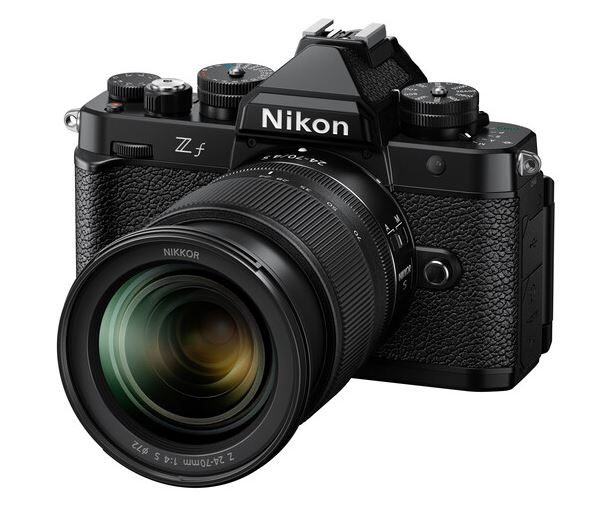
Finally, the Nikon ZF camera has arrived at almost the same announcement price as the Z6 Mark II. For those who were waiting for the Z6 Mark 3 camera update, this can be a perfect replacement for the Z6 Mark II camera.
The sensor isn’t new; it is the same sensor that we have seen in the Nikon Z6 Mark II camera. However, we do have a brand new image processor that enables many new features that we have seen in the Nikon Z8 or Z9 camera.
10 Brand New Features of Nikon Z8 Camera
- Ability to create 100-megapixel images from the pixel shift mode: With the large full-frame sensor and amazing low light capability, the camera also features a pixel shift shooting mode. However, unlike Panasonic, Nikon doesn’t claim it’s a handheld pixel shift shooting mode, so you have to use it carefully with the help of a tripod or a monopod. Also, you have to merge them in NX Software, once the images are shot.
- Upto 8 stops of image stabilization mechanism: The Nikon ZF is one of the first Nikon mirrorless cameras under the $2000 price range that offers an image stabilization mechanism of 8 stops, which is now on par with the Canon R6 Mark II camera and better than the recently announced Sony A7 C2. But, it’s more advanced since, The IBIS center can be shifted with the AF point in the Photo Mode. Traditionally all the cameras IBIS is most effective in the center of the image and not in the corners.
- With the introduction of the Expeed 7 image processor and a new artificial intelligence autofocus system, the camera is now able to track 9 different types of subjects with its improved 3D tracking mechanism. The AF system is directly coming from Nikon Z8 and Nikon Z9.
- Now, with the help of a new image processor and improved image recording algorithms, noise is much more controlled, and you can expand the camera’s ISO range up to 20,4800. The standard ISO range goes up to 64,000.
- The high-efficiency compression format is now added to the Nikon ZF camera that was first introduced in the Nikon Z9.
- Burst rate or continuous shooting speed: With the help of a mechanical shutter, you can get up to 15 frames per second, and with an electronic shutter, you get 30 frames per second limited to Jpeg. One more thing to be added is that the camera now supports pre-burst options. In JPG-only C30 mode, the camera uses a video stream to capture 30 frames per second images to store pre-burst data inside the camera. Since the sensor is same as the Nikon Z6 II we recommend you keep yourself limited to a Mechanical shutter to avoid the rolling shutter effect.
- Highly detailed black and white mode: This gives you a chance to select mono profiles including a low contrast flat mono profile as well as a deep tone mono. The deep tone mono enhances the red color details in the scene. BW mode can be quickly selected from the top dial of the camera.
- The camera can shoot 4K videos up to 60 frames per second but in crop mode of 1.5 X (that is in DX mode). When you are recording 4K videos up to 24 frames per second or 30 frames per second, the camera uses a 6K oversampled file to generate 4K videos up to 30 fps. So you will get highly detailed video footage from your camera if you are using your camera up to 4K at 30 FPS.
- The first Nikon Camera Under $2000 Range to have a 2.1 Million dot Full articulating Display screen, Content creators now can easily buy this camera without having a second thought in their brains.
- First Nikon Camera Under the $2000 Price range to have AF sensitivity up to – 10 Stops @ F1.2 Aperture, so literally you Lock AF in near about dark environment with bright aperture-based lenses.
During initial tests, Digital Photography Review team members found that the rolling shutter of the Nikon ZF camera is at 22 milliseconds in 4K at 30p capture which is exactly similar to Panasonic S5 Mark II camera. One thing to note is that it’s not only a coincidence; Panasonic also shoots 4K at 60fps video in crop mode (that is in 1.5 x DX crop mode).
The Nikon ZF camera has a body design similar to the Nikon FM2, with extensive manual control and a small LCD on top to show the current aperture value. The camera looks extremely amazing from its design perspective. Since it’s an FM2 design-based camera, technically you don’t get a hand grip. A Micro SD card slot was added to make it more compact and also to give photographers dual cars slot option, so you have one USH II SD and one USH I Micro SD card slot.
Get your Nikon Zf Camera from B&H $1996 | B&H Store with 24-70mm Lens
By admin, on September 19th, 2023
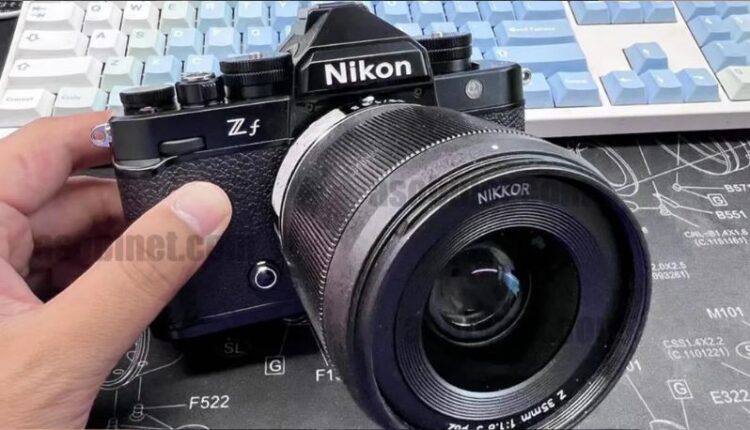
On September 8, 2023, we were one of the first websites to tell you that the Nikon Z retro camera would be released on September 20th. Finally, the day is almost upon us and we are expecting the Nikon ZF camera announcement from Nikon on September 20th.
Nikon Zf Updated Core Specification
- Black camera body
- 24.4 MP BSI-CMOS sensor
- Expeed 7 processor
- Weight: 700g (inc. battery, the Z5 is 590g, the Z6II is 615g )
- Dimensions: 144mm x 101mm
- Up to 30fps (JPG/HEIF)
- High Extended Shooting for RAW and HEIF
- 4k 60 video CROP
- 10-bit H.265 HEVC video (SDR/HLG/N-log)
- 1080 120p
- USB C PD (fast-charging technology based on the USB-C standard)
- ISO 100-64,000 (for comparison the Z6II ISO range is 100-51,200)
- AF (273 focus points) comes with features from Z8/Z9 with 3D tracking
- Shutter selection options: Mechanical / Electronic Front-Curtain / Auto
- AF (273 focus points) comes with features from Z8/Z9 with 3D tracking
- New feature related to AF
- EN-EL15 battery
- The Z f logo is moved to the left (the Zfc has it on the right)
- Dual memory card slots (SD+MicroSD) – this is probably why the first reports came out with only one memory card slot, the second slot could
- be hidden and be used just like the internal memory on some cameras
- Pixel Shift: new high-res mode will be implemented for the first time in a Nikon mirrorless camera
- August-September announcement, shipment before the end of 2023
- Improved autofocus compared to Z5/Z6II
- A few different lens kits/bundles will be available in the $2,000-$2,500 price range
- Price for body only: $1,999
- One of the bundles will be with the Nikkor Z 40mm f/2 (SE) lens (no new lens will be introduced with the Zf)
- Very similar (but improved) design/layout from the Nikon Zfc
- Small LCD screen on top for aperture display
- New 3rd function on the sub lever of the shutter speed dial (besides photo/video) for B&W mode (B&W/Photo/Movie)
- Has a little grip/bump like the Nikon Df (see the mockup pictures)
- Better build quality compared to the Nikon Zfc
- Fully articulating screen
- Magnesium Alloy body
- Size: 144mm x 101mm x 57mm
Follow us on our social pages FACEBOOK | TWITTER | INSTAGRAM to get live news + Nikon Rumors 24X7
By admin, on September 8th, 2023

According to the latest rumors surfaced over the web, Z f full-frame retro camera may be released around September 20, and the price is expected to be only US$1,999.
Nikon Zf Updated Core Specification
- Black camera body
- 24.4 MP BSI-CMOS sensor
- Expeed 7 processor
- Weight: 700g (inc. battery, the Z5 is 590g, the Z6II is 615g )
- Dimensions: 144mm x 101mm
- Up to 30fps (JPG/HEIF)
- High Extended Shooting for RAW and HEIF
- 4k 60 video CROP
- 10-bit H.265 HEVC video (SDR/HLG/N-log)
- 1080 120p
- USB C PD (fast-charging technology based on the USB-C standard)
- ISO 100-64,000 (for comparison the Z6II ISO range is 100-51,200)
- AF (273 focus points) comes with features from Z8/Z9 with 3D tracking
- Shutter selection options: Mechanical / Electronic Front-Curtain / Auto
- AF (273 focus points) comes with features from Z8/Z9 with 3D tracking
- New feature related to AF
- EN-EL15 battery
- The Z f logo is moved to the left (the Zfc has it on the right)
- Dual memory card slots (SD+MicroSD) – this is probably why the first reports came out with only one memory card slot, the second slot could
- be hidden and be used just like the internal memory on some cameras
- Pixel Shift: new high-res mode will be implemented for the first time in a Nikon mirrorless camera
- August-September announcement, shipment before the end of 2023
- Improved autofocus compared to Z5/Z6II
- A few different lens kits/bundles will be available in the $2,000-$2,500 price range
- Price for body only: $1,999
- One of the bundles will be with the Nikkor Z 40mm f/2 (SE) lens (no new lens will be introduced with the Zf)
- Very similar (but improved) design/layout from the Nikon Zfc
- Small LCD screen on top for aperture display
- New 3rd function on the sub lever of the shutter speed dial (besides photo/video) for B&W mode (B&W/Photo/Movie)
- Has a little grip/bump like the Nikon Df (see the mockup pictures)
- Better build quality compared to the Nikon Zfc
- Fully articulating screen
- Magnesium Alloy body
- Size: 144mm x 101mm x 57mm
Follow us on our social pages FACEBOOK | TWITTER | INSTAGRAM to get live news + Nikon Rumors 24X7
|
KEEP THIS BLOG ALIVE - Support New Camera Buy Canon Lenses, Buy Music CD or Digital Camera at amazon it helps this site, and you do not pay anything extra, it is just a way to help support this site.

|

























